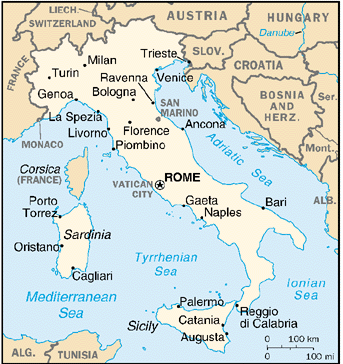Archaeological Areas of Pompeii,
Herculaneum and Torre
Annunziata.


Inscribed :1997 Criteria: C (iii)(iv)(v)
Brief Description
When Vesuvius erupted on 24 August A.D. 79, it engulfed the two flourishing Roman towns of Pompeii and Herculaneum, as well as the many wealthy villas in the area. These have been progressively excavated and made accessible to the public since the mid-18th century. The vast expanse of the commercial town of Pompeii contrasts with the smaller but better-preserved remains of the holiday resort of Herculaneum, while the superb wall paintings of the Villa Oplontis at Torre Annunziata give a vivid impression of the opulent lifestyle enjoyed by the wealthier citizens of the Early Roman Empire.
Pompeii
is first mentioned in history in 310 BC, when, during the Second Samnite War,
a Roman fleet landed at the Sarnus port of Pompeii and from there made an
unsuccessful attack on the neighbouring city of Nuceria. At the end of the
Samnite wars,
A
riot in the amphitheatre at
⑤The
ruins at Pompeii were first discovered late in the 16th century by the
architect Domenico Fontana.
Excavation of the buried cities began first at

ポンペイの遺跡
http://www.e-nakamas.com/fukui/pompei.htm(世界遺産無限都市 から写真引用)
http://website.lineone.net/~pnrichardson/clgepage/clgenotes/britannicapompeii.html(classics at SMCから本文引用)
NOTE 単語
mention:言及する confederation:同盟すること revolt:背く subjugate: citizenship:市民権 replace:入れ替わるinstitution:団体 catastrophe:大惨事 inquired about:~を問う volcanic:火山suffocate:呼吸困難にする buried:埋没した layer:地層 pumice stones:軽石 ash:火山灰 destructive:有害な ruins:遺跡 excavation:出土品
travel
tips
Climate/Clothing
Spring and Fall: 55 - 75°F; Summer: 70 - 85°F; Winter: 40 - 55°F.
Bring comfortable shoes, a sweater, clothes you can layer and an all-weather
coat. On the cruises, informal dress is the general rule but there may be some
occasions were formal dress is required. Some religious sites may require
modest dress to enter (no shorts or sleeveless tops).
Electricity
The voltage used is 220 volts (the
Shopping
Shops are open from
Things to buy: Clothes for men & women (dresses, shoes, gloves, silk ties,
shirts); lacework, jewelry, leather goods (handbags, cases, boxes, luggage),
ceramics, gold and silver items, alabaster; woodwork, straw, embroidery, glass
and crystal ware. It is advisable to carry merchandise purchased with you in
order to avoid any inconvenience. All major credit cards are honored in
http://www.gate1travel.com/Destinations/General_Info/travel_tips/Italy.htm(GATE1 TRAVEL から引用)
旅先の旅行英会話
Placing an Order. 注文をしている
·Hi, I’d like to place an order.
発注したいのですが。
·
Can I place an order please?
発注したいのですが。
·
Do you deliver to
日本に発送してますか。
·
How much is shipping to
日本までの送料はいくらですか?
·
When should I expect delivery?
いつごろ配達されますか?
Canceling an Order 注文をキャンセルする
·
I need to cancel my order.
すみませんが、注文をキャンセルできますでしょうか。
·I have to cancel part of my order.
注文を一部キャンセルしたいのですが。
http://businesseigo.com/orders.shtml(happy traveler から引用。)
イタリア語の一口メモはこちらのサイトを参考にしてください。→http://www.city.sendai.jp/shimin/sp-koryu/kiebo/italia_go.html
カンバーニア州ナポリ県ポンペイ市について
Latitude:N40,28
a time difference:8hours
a population:30thousands
climate:4seasons
currency: Euromoney
www.shejapan.com >
World Heritages
> Pompeii
© 2005 SHEJapan.com